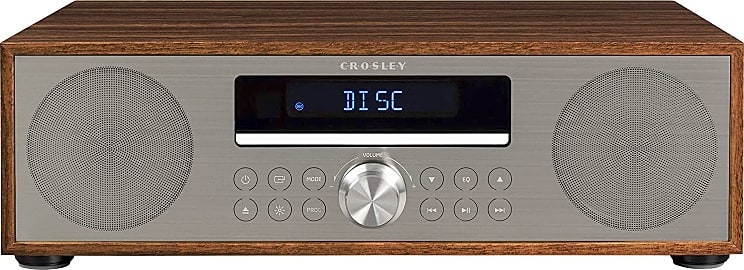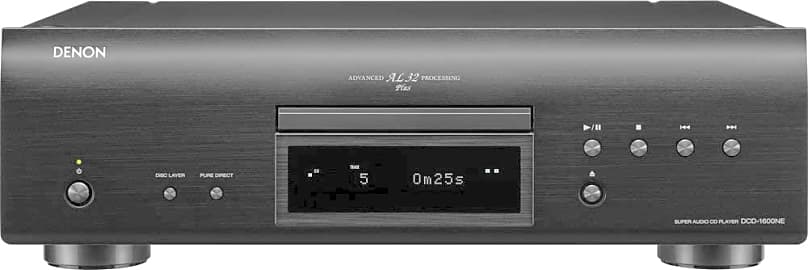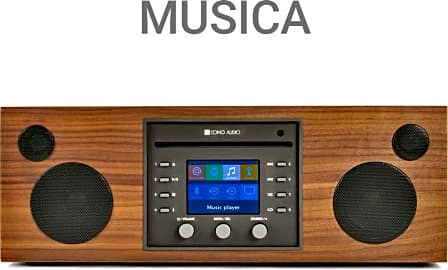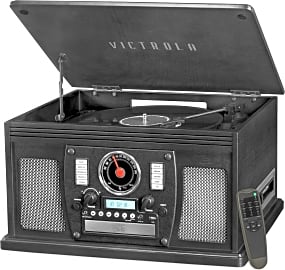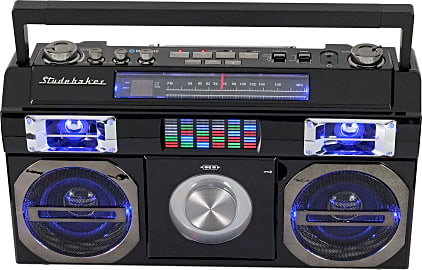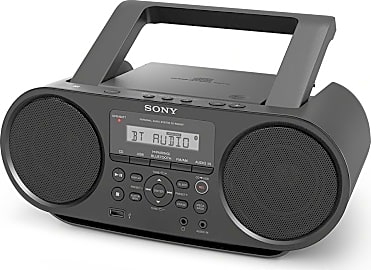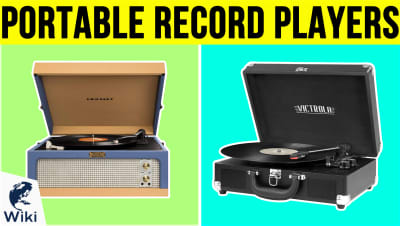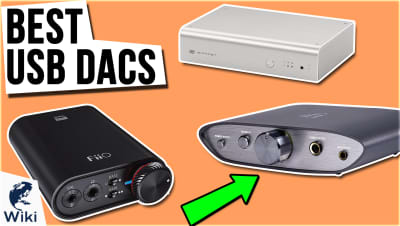The 10 Best CD Players

This wiki has been updated 34 times since it was first published in October of 2016. If you haven't completely given in to streaming services, you may want to check out these CD players. They will let you enjoy your jewel box-encased collection with quality sound and, depending on the model, are also available with handy features like remote controls, AM and FM radios, Bluetooth connectivity, and the ability to digitally archive CDs, so you can listen on a PC or MP3 player. When users buy our independently chosen editorial selections, we may earn commissions to help fund the Wiki.
Editor's Notes
November 06, 2020:
While the CD player isn't necessarily the most cutting edge piece of technology, it does offer a reliably high audio quality — if the player is up to the task. We took a look at our last list and thought there were a few too many mid-to-low range options, especially when plenty of audio companies are still producing Hi-Fi equipment for people who know that their CDs offer about three times the fidelity of streaming music.
One such model that's certainly priced for audiophiles is the Denon DCD-1600NE Single Disc. For models in this range, most of the quality comes from the digital-to-analog conversion, as well as the anti-vibration value of the chassis. You'll also notice that the Denon has zero total harmonic distortion and a great signal to noise ratio, meaning the tone it produces is clear and pure. It's also important to note that this is one of the few options also capable of reading DVD-R/RWs and DVD+R/RWs, so you can take lossless digital files and make your own high-resolution DVD audio discs and enjoy them here.
Another newcomer to the ranking is the Crosley CR3501A-WA Fleetwood, which is made by a company perhaps better known for their portable record players. Their CD offering is surprisingly good, with a nice set of speakers and an attractive wooden housing. And we still have the Sony ZSRS60BT at a low spot for anyone needing to save a little scratch on their investment.
November 14, 2019:
We made quite a few changes during this update to reflect the best options on the market in a range of CD player types. For example, we replaced the Yahama CD-N301 with the Marantz CD6006. Though the latter is missing a networking port, it was made for the American market and comes with an English manual, whereas the former was made for the Japanese market. Considering the fact that few people use wired internet in their homes these days, we didn't think it was that big of a sacrifice to make. Also the Marantz CD6006 has a high-quality DAC that gives music a very warm sound when paired with a great receiver and set of speakers.
We also replaced the Tascam CD-200SB with the Numark MP103USB because the former suffered from complaints of dying after just one or two years of use. Also, the latter has more capabilities, such as pitch and tempo control, scratching effects, and more. Since they are both rack mountable and intended for professionals, they serve a similar market, too.
Of course, in addition to replacing poorly performing items, we also want to make sure we are recommending the newest versions of products, as long as they too perform well, which is exactly why we replaced the Hott CD611 with the Hott CD711. In all honesty, there are few notable differences between these items, except that the Hott CD711 is a newer iteration.
Some other new additions for this update include the Yamaha MCR-B020BL Micro Component System, which is a great all-in-one option for mid-sized rooms; the Studebaker SB2145B, which is a cool retro style boombox that is ideal for on-the-go jam sessions; and the Yamaha Cd-c600bl 5-Disc Changer.
Special Honors
Emotiva ERC-4 Differential Made with audiophiles in mind, this offering delivers a silent noise floor from exceptionally crafted circuitry, and as it features an optical input, it can act as a digital-to-analog converter for other media sources, enriching the sound of anything with a matching output. It has a machined aluminum face plate and an all metal cabinet with a reinforced steel chassis. emotiva.com
The History Of The Compact Disc
It first started with James T. Russel, an American inventor, in 1966.
The creation of the compact disc cannot be attributed to a single individual, but rather a combination of individuals and corporations. At some point in time, each had a hand in the development of the technology. It first started with James T. Russel, an American inventor, in 1966. At that time, he filed for two patents, one for synchronizing photographic records of digital information, and one for an analog to digital to optical photographic recording and playback system. These two patents formed the basis for the technology that would eventually lead to the compact disc.
He further refined his technology using a combination of digital recording, laser, and optical disc technology, and eventually succeeded in creating a system that could record and play back sounds without requiring physical contact between the components. In the 1970s, Philips and Sony licensed Russel's patents to develop their own prototype systems. In 1978, Philips decided that compact discs would be 115 mm in diameter and would be made from polycarbonate. They also decided on the type of laser that would be used by compact disc players. In mid-1978, Philips was the first to announce the technology to the public. They demonstrated the initial prototype in Japan and Europe in 1979.
Later in 1979, Philips and Sony formed a collaboration to further improve compact disc technology and decrease the timeline in which it could be released for sale to consumers. Between the two companies, it was decided that CDs would use a standard sampling rate of 44.1 kHz and use 16-bit audio. They also increased the diameter of the disc from 115mm to 120mm. These decisions allowed for a standard compact disc to contain up to 74 minutes of audio playback.
In 1980, the joint collaboration released the Red Book CD-DA, the first of a series that would eventually be known as the Rainbow Books. The Rainbow Books contain the technical specifications for all compact disc formats.
Sony released the first commercially-available CD player in 1982, the Sony CDP-101, followed soon by a model from Hitachi. At the time, it was only available in Japan and parts of Europe. After gaining widespread popularity in these two markets, the technology was released in the United States in 1983.
How A CD Stores Data
Compact discs are made from polycarbonate plastic. A very thin layer of aluminum is applied to the polycarbonate surface, and then coated with a protective layer of lacquer. When completely assembled, a compact disc measures 1.2 mm thick and weighs roughly 16 grams. The polycarbonate surface of a CD has a series of molded spiral tracks. It is in these tracks that the data is stored.
When a compact disc is played, a read laser bounces beams of light off of the surface to detect the pits and lands.
Grooves on the polycarbonate surface are known as pits. The areas in between the pits are referred to as lands. A standard compact disc contains somewhere between three and five million pits. As with many other forms of digital communication, binary code is used to as a method of storing and communicating data. When a compact disc is played, a read laser bounces beams of light off of the surface to detect the pits and lands. Each time the surface of a CD changes from a pit to a land, or a land to a pit, the system interprets it as a 0. If the surface has multiple lands or pits in a row, no change is detected by the system, in which case it is interpreted as a 1. This series of binary digits forms the data, which is played back as an audio track.
Burning a compact disc at home uses a similar concept to create data, but instead of creating actual pits and lands, a special dye is used to create reflective and non-reflective areas on the disc's surface. CD-Rs are created with a layer of translucent dye in between the aluminum coating and the polycarbonate surface. Before the dye is altered by a computer's write laser, a CD player's read laser can pass right through it and be reflected back. When burning a compact disc, the write laser generates heat, which turns the dye black in specific areas. Unlike the unburned areas of the dye, the burned areas are no longer reflective. Non-reflective areas of the CD surface are registered as a 0 and reflective areas are registered as a 1 by a CD player.
How A CD Player Works
Inside of every CD player is a semiconductor diode laser and a photoelectric cell. As you press play on the device, an electric motor spins the disc at speeds up to 500 RPM. Once the disc reaches the correct speed, the CD player turns on the diode laser and shoots it at the surface of the CD. The laser begins to scan the disc at the center and works its way outwards towards the edge. It is interesting to note that this is the opposite way an LP is read, where the turntable's needle starts at the edge and and works its way towards the center. As the laser works its way from the center of the disc outwards, the motor gradually slows down the disc's RPM.
a 1. If no light is detected by the cell, there is no electric current sent and the circuit registers it as a 0.
When the laser hits the surface of the CD, it is reflected back off of the pits and lands and into the photoelectric cell, which detects the amount of light reflected. Pits scatter the light, which causes little to no light to be reflected back at the cell. Lands reflect the light directly back to the cell, without diffusing it in any manner.
When the photoelectric cell detects a land, it sends a burst of current to an electronic circuit somewhere in the device which registers as a 1. If no light is detected by the cell, there is no electric current sent and the circuit registers it as a 0. In this manner, the circuit slowly recreates the binary code that was originally used to store the data on the disc. Inside of the CD player there is a digital-to-analog converter circuit, often referred to as a DAC. This circuit decodes the binary digits and once again converts them back into a pattern of electric currents. It is these electric currents that the CD player's speakers transform into sounds.


